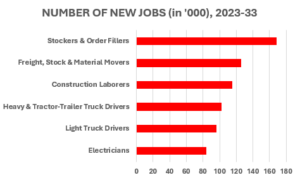Key Insights
- Search firms focus on stable sectors like tech, healthcare, and essential services during times of uncertainty.
- Firms build trust with clients by offering timely market insights for smarter hiring decisions.
- Social media helps reach passive candidates, who make up 70% of the global workforce.
- Temporary and contract hires surged by 28% during the pandemic, providing adaptability for companies.
- AI and data analytics improve hiring efficiency by 30%, with more firms investing in advanced tools.
Executive search firms must be agile and proactive to navigate the challenges posed by these external factors. Here’s how these impacts specifically influence our operations and how we adapt:
Adjusting Search Strategies
During times of uncertainty, search firms may adjust their strategies to focus on industries and roles that are less affected by external factors. This might include sectors like healthcare, technology, and essential services, which often show resilience.
The tech industry has also demonstrated resilience, with the World Economic Forum reporting that the global technology sector grew by 7% in 2023, and jobs related to cybersecurity, AI, and cloud computing are expected to increase by 12% annually through 2030.
Essential services, such as logistics and food production, saw a 15% rise in hiring during the 2020 pandemic and continue to remain steady during periods of economic instability.

Building Stronger Client Relationships
Executive search firms emphasize maintaining and strengthening relationships with their clients. By providing timely insights and advising on market conditions, they become trusted partners, helping clients make informed decisions about hiring and talent management. See how BrainWorks did it for Wind Creek.
Expanding Candidate Pools
To ensure they can meet client needs, search firms expand their candidate pools by tapping into a wider network of professionals. This includes leveraging technology and social media platforms to reach passive candidates who might be open to new opportunities in uncertain times.
A LinkedIn Talent Solutions report from 2023 shows that 70% of the global workforce is made up of passive candidates, and 52% of recruiters are increasingly using social media and technology to connect with these individuals.
Enhancing Flexibility
Flexibility in terms of contract and interim hires becomes crucial. Search firms may offer more flexible hiring solutions to clients who are hesitant to commit to permanent roles amid economic uncertainty.
During the COVID-19 pandemic, temporary staffing surged by 28%, a trend that is expected to persist as organizations seek flexibility in their workforce amid fluctuating market conditions.
Investing in Technology
Utilizing advanced technology and data analytics helps search firms predict hiring trends and understand market movements. This allows them to provide data-driven recommendations to clients and stay ahead of the curve.
Technologies like AI, machine learning, and data analytics have increased hiring efficiency by as much as 30%, reducing time-to-fill for critical roles.
In 2022, 65% of recruiters reported using data analytics tools to improve their decision-making, with 72% planning to invest in more advanced tools within the next five years, per a survey by Bullhorn.
Focusing on Communication
Clear and transparent communication with both clients and candidates about the current market conditions and expectations helps manage uncertainties effectively. This builds trust and ensures alignment in the hiring process.
The landscape of executive search is continuously shaped by external factors. By understanding these influences and adopting adaptive strategies, search firms can navigate challenges and continue to deliver value to their clients. Staying agile, informed, and proactive will be key to thriving in a world where change is the only constant.
We’d like to extend a special thank you to LaborIQ and Mallory Vachon, PhD, Chief Economist for the data and their research for this blog.
Recent Articles
- 2025 Salary Guide: Product Marketing Managers in CPG
- How Forward-Thinking CPG Companies Are Winning the Talent Race in 2026
- How Much Does a VP of Manufacturing Make in Supply Chain?
- AI is Exploding—Here’s what you’re missing in hiring for AI
- The Rise of Fractional General Counsel
- Avoiding the Costly Mistakes of C-Suite Hiring
- How Much Does a Chief Marketing Officer Make in Cybersecurity?
- What to Know About Chief Risk Management Officer Compensation in Cybersecurity
- BrainWorks Elevates Kelly Maslow and Bowen Knarr to Vice President Roles
- Why Top Sales Leaders Aren’t on Job Boards—And How to Hire Them Anyway